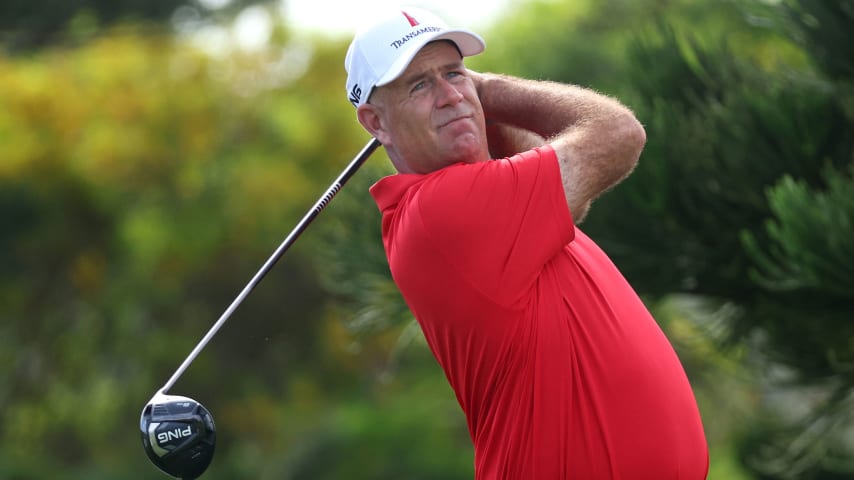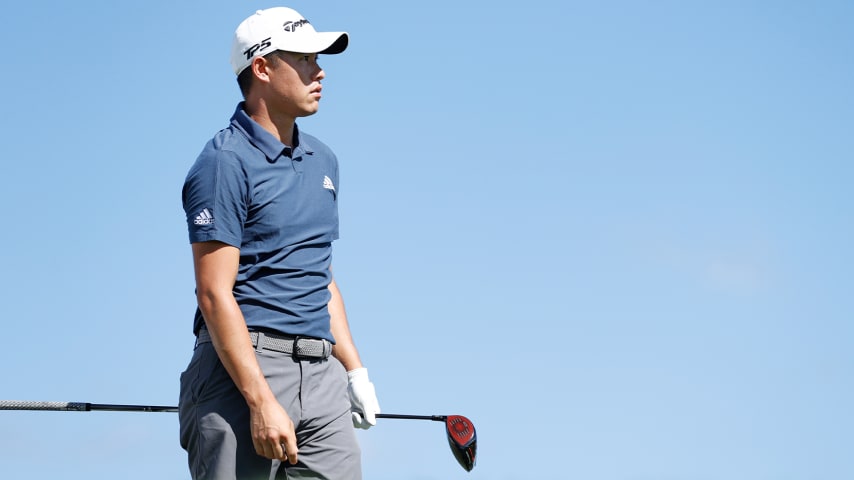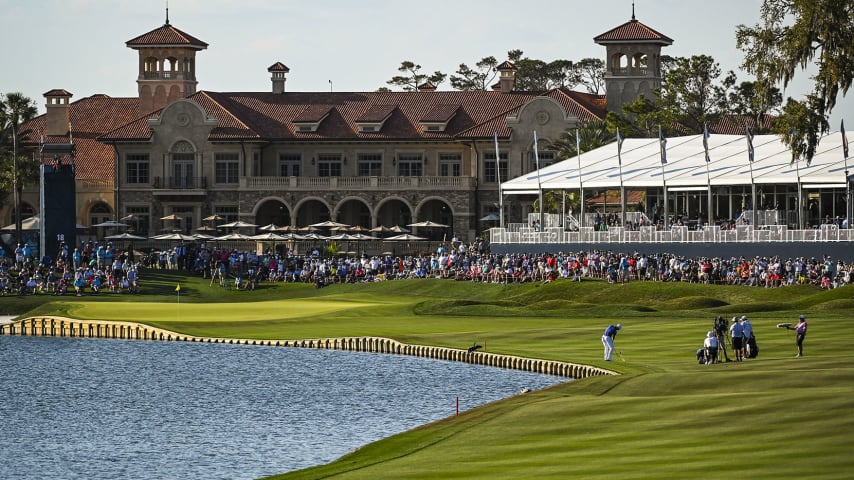Inside My Swing: Stewart Cink
6 Min Read

How he gained distance at 47 and ended his victory drought
Written by Sean Martin
How he gained distance at 47 and ended his victory drought

Stewart Cink on how he increased his driving distance
Stewart Cink was nearing 50 and beginning to notice that his drives didn’t carry the bunkers they used to.
A decline in distance is often an unavoidable consequence of aging, but Cink wasn’t ready to accept his shorter tee shots. Long hours in the gym and a plethora of protein shakes weren’t necessary for him to reverse the trend, though.
He was able to gain more than 10 yards – and win for the first time in more than a decade – by making adjustments to his technique and equipment.
“I didn't think that I was really slowing down physically,” he said. “In fact, my clubhead speed wasn't slowing down. I just had gotten a little bit inefficient with my driving.”
Adjusting his setup – specifically, his ball position – allowed him to switch to a lower-lofted driver and unlock the power that he already had in his 6-foot-4, 205-pound frame.
Just a few weeks after implementing these changes with his full-swing coach, Mike Lipnick, Cink won the Fortinet Championship in September 2020, his first win since the 2009 Open Championship.
“It gave me so much confidence … to be able to rip the cover off the ball,” he said after his win in Napa.
He leapt from 113th to 27th in driving distance, averaging 306.6 yards off the tee last season. He ranked ahead of big hitters like Tony Finau and Bubba Watson, as well as young studs like Sam Burns and Scottie Scheffler.
Cink is playing this week’s Sentry Tournament of Champions after also winning the RBC Heritage in April, his second victory of the 2021 season. At 48, he is the second-oldest player at Kapalua.
We’ll take a closer look at Cink’s swing changes in this edition of Inside My Swing, where PGA TOUR players share what they’re working on and how they keep their game performing at an elite level.
FORWARD THINKING
Cink failed to qualify for the FedExCup Playoffs in both the 2019 and 2020 seasons. He was driving it straight and beating the local pros while at home, but his low-flying drives didn’t translate to success out on TOUR.
“I could hit it nice and straight,” he said, “but I was losing yards in the air.”
Lipnick and Cink's short-game coach, James Sieckmann, wanted Cink to move the ball forward in his stance so he could hit up on it and increase the carry distance of his drives.
Moving the ball forward also allowed him to use a lower-lofted driver, which imparts a more direct blow and transfers more energy into the ball (for a more extreme example, imagine the difference between hitting a ball with a 3-iron and a sand wedge).
Making a change, even to a player’s static address position, is often uncomfortable, however. Cink admits that he felt “like a clown,” when he first moved the ball forward in his stance.
“I was almost embarrassed to hit shots in front of people,” Cink said. “But Mike showed me a picture of it and it looked like a completely normal setup.
“My attack angle went from, say, minus-2 to about plus-2, which is a kind of a big deal in driving these days. The best drivers and the guys who hit it the farthest … are the ones that attack up.”
A look at the stats confirms that. Some of the TOUR’s highest hitters are also the longest. PGA Championship winner Phil Mickelson had the highest average apex on his tee shots last season (135 feet, 2 inches). Rory McIlroy ranked second, and Bryson DeChambeau was fourth in that metric.
The average apex height of Cink’s tee shots increased nearly 20 feet, to 114’, 4”. That was 26th-highest on TOUR last season. It led to a 15-yard increase in his average carry distance off the tee.
“I wasn't trying to change my attack angle, but the setup change and the way I was using the bigger muscles in my body on my back swing, I kind of accessed more of the power from stronger areas of my body,” Cink said, “and those two changes just resulted in a lot more ball speed and a lot better attack angle.
TAKING YOUR MEDICINE
Cink describes his backswing before the changes as “shrimpy.” He was swinging his arms, but not using his core and lower body to create power.
“I was just a little bit lazy with my turn,” he said. “My lower body wasn’t doing much. It was a stabilizing part of my swing instead of an active and dynamic part of my swing. So we recruited the big muscles on my right side to really load a lot of energy.”
Cink’s ball position was part of the problem. With the ball back in the stance, it was harder to turn behind the ball and load into his right side. Moving the ball forward helped him do this.
So did making golf swings while holding a medicine ball with both hands. We recruit our core whenever we need to move a heavier object. That’s why this drill helped Cink feel how to properly turn in his backswing.
“I am concentrating on getting that weight rotated into the right side,” he said. He doesn’t want his weight to travel outside the midline of his right foot, however. That thought keeps him focused on turning, instead of sliding, in the backswing.
TURN AND BURN
Because he hadn’t turned properly on the backswing, Cink had to restrict his rotation on his downswing. This kept him from swinging as fast as he could.
Cink’s right leg used to stay bent during the backswing, but it now straightens as he turns his lower body and his weight shifts into his right side.
“Getting deeper into his right leg – so that his right leg would straighten on the backswing – allowed him to use the ground a bit better and allowed him to rotate sooner on the downswing,” said Lipnick, the Director of Instruction at TPC Sugarloaf in Duluth, Georgia.
Players can create speed by pushing off the ground in the downswing. Think of a discus thrower as he releases the disc.
Before the changes, Cink had to slide to the left at the start of the downswing. This caused the club to fall below the desired plane. Now he feels like he turns almost immediately at the start of the downswing.
“He has a little bump to the left, and then he rotates,” Lipnick said.
The medicine ball again helps Cink feel the proper swing. He imagines heaving the ball into a wall down his target line. This teaches him how to unload the power he’s created in his backswing.
“The idea of loading and unloading the power into a target is very similar to a golf swing,” Cink said. “(The medicine ball) is an external cue … like a swing thought, except it’s not technical.”




